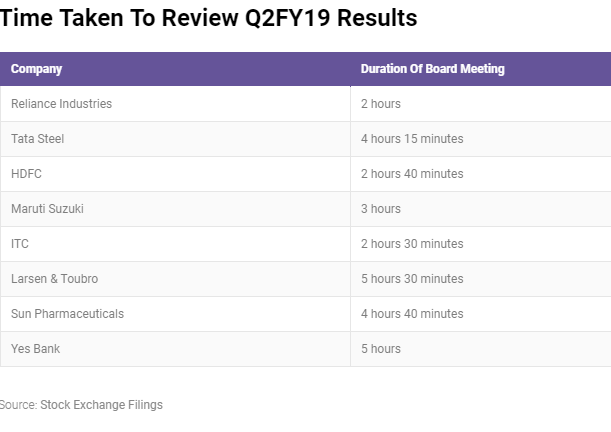Corporate Governance
In simple terms, the combination of the rules, regulations, practices, policies and processes required by an entity to work upon in order to create a controlled and regulated environment is called CORPORATE GOVERNANCE.
The concept of Corporate Governance is important for an entity because an entity carries a responsibility of securing the interest of all its stakeholders which consists of shareholders, senior management executives, customers, suppliers, financiers, Government and last but not the least community.

Elements of Corporate Governance
An entity aiming for good corporate governance should ensure the existence and proper working of the following elements for efficient and orderly conduct of its business-
1. Rule of law
2. Transparency
3. Responsiveness
4. Consensus oriented
5. Equity and Inclusiveness
6. Accountability
7. Participation
Emergence of Corporate Governance in India
The concept of Corporate Governance gained its recognition during the early 1990’s. During this phase the adoptability of such principles was only a voluntary measure. The major milestone came when SEBI introduced Clause 49 of the Listing Agreement and made it mandatory for the companies to ensure Corporate Governance Framework in their working and conduct of business. The Mandatory Guidelines issued by SEBI in 2009 further strengthen the existence and application of the concept of Corporate Governance across business entities. Finally with the evolvement of Companies Act 2013 , the stringent guidelines were made in each and every section emphasizing the role of efficient Corporate Governance across working of the Organisation.
Why is Corporate Governance important?
There is a famous saying that “Prevention is better than cure”. The same principle applies here also. The concept of Corporate Governance plays the role of a preventive check up for the health of the organisation. The more preventive health check ups will be done the less will be the cure afterwards. In other words, the existence of the good and effective Corporate Governance not only increases the accountability of the company but also controls and prevents the massive disasters before they occur. In one word, the organisation’s capability to be “Prudent” clearly shows the level of existence of an effective culture of Corporate Governance.
Benefits of Corporate Governance
- Minimisation of Wastages, Corruption, Risks and mismanagement
- Corporate Success and Growth
- Confidence of investors in the entity
- Lowering the capital cost
- Achievement of the objectives in the interest of the shareholders and the organisation
Indian Scenario
From the various cases reported in the past regarding Corporate Governance Failures, it would not be wrong to say that Indian Companies have displayed every flaw in their working in front of the investors including alleged frauds, mismanagements, under performance, conflicts of interest , culture clashes etc.
An Indian Lawyers succinctly describes the Corporate Governance Culture in India in the following words,
“In India, its less about Board Management and more about ‘managed’ boards”
Some of the instances quoted by a leading daily Bloomberg Quint clearly demonstrates the scenario
| TATA Sons
The Board aligned to the majority shareholder, gave Cyrus Mistry a glowing performance review only to sack him a few months later Infosys The Board first played supplicant to Chief Executive Officer Vishal Sikka, then to former promoter NR Narayan Murthy. Investors paid the price for unstable leadership. And even today, investigations into acquisitions have not been shared with all the stakeholders. Axis Bank The Board seemed unquestioning of Managing Director and Chief Executive Officer Shikha Sharma. But the regulator wanted her gone. ICICI Bank The Board appeared like a deer in the headlights, dazed by the celebrity of MD & CEO Chanda Kochhar, allowing her continued presence in the company, even as she was being investigated for alleged nepotism. Fortis Promoters held sway, the board turned a blind eye to many suspicious transactions, and finally shareholders booted them out Yes Bank Yet another Board seemed unaware of the regulator’s unflattering assessment of the MD&CEO Rana Kapoor. And then was found wanting a succession plan. IL&FS The Board was either kept in the dark by an entrenched management or struggled with the complexity of hundreds of subsidiaries. And slept through a liquidity basis. |
There is no doubt that during last few years, Indian Government has taken tremendous steps to provide the Indian Corporate Sector with various stringent laws and provisions for ensuring a foolproof Corporate Governance mechanism but one cannot sit and idealised the existence situation on its own as “Corporate Governance should be done more through principles than rules”.
There are various other things which needs transformation at the Corporate Level but in any case they can also not protect the devastation of the Corporate Governance due to Negligence and Oversight
- Culture and Behaviour across the Board
- Overwhelming influence of the Promoters
- Anti Minority Actions
- Independence Quotient of the Directors
- Selection of the Independent Directors and actual Independence
- Shareholder activism
- Strategic Advisory Role of Independent Directors
- Board Engagement and Duration/ Contents of the meeting

What is Compliance Report on Corporate Governance?
SEBI vide its circular dated 24th September 2015 had shared the Format for compliance report on Corporate Governance to be submitted to Stock Exchange (s) by Listed Entities wherein certain set of information was required to be submitted by all the listed entities in the form of Quarterly Compliance Report to recognised Stock Exchange(s) within fifteen days from close of the quarter. Three different types of Annexures were prescribed mentioned as under-
- Annexure I- on quarterly basis
- Annexure II-at the end of the financial year(for the whole of the financial year)
- Annexure III- within 6 months from the end of the financial year
This Compliance Report is also required to be placed before the Board of Directors of the listed entity during the respective meetings.
SEBI’s recent Notifications and circulars for amendment of the formats of the Compliance Report on Corporate Governance
SEBI vide its latest circular dated 16th July 2019, has modified the format of the Compliance Report on Corporate Governance to be submitted to Stock Exchange by listed entities. The Committee on Corporate Governance under the Chairmanship of Shri Uday Kotak made several recommendations. Most amendments necessary to implement these recommendations have been made in the SEBI (Listing Obligations and Disclosure Requirements) Regulations, 2015 vide notification dated May 9, 2018. Some of these amendments necessitate changes to the format of the quarterly compliance report.
Three different types of Annexures have been prescribed mentioned as under-
- Annexure I- on quarterly basis
- Annexure II-at the end of the financial year(for the whole of the financial year)
- Annexure III- within 6 months from the end of the financial year
Applicability of the New Format
The circular shall come into force with effect from the quarter ended 30th Sept 2019.
Additional Disclosures required in the Format of the Compliance Report
| Annexure I- Format of report on Corporate Governance to be submitted by a listed entity on quarterly basis | ||||||
| Particulars | New Additional disclosure | Regulation | ||||
| Composition of Board of Directors | – Initial Date of appointment
– Date of re-appointment – Date of cessation – No of independent directors in the listed entity including the listed entities – Whether regular chairperson appointed – Whether chairperson is related to managing director or CEO |
Regulation 17 | ||||
| Composition of Committees | – Whether regular chairperson appointed
– Date of appointment – Date of cessation |
Regulation 26(1) | ||||
| Meeting of Board of Directors | – Whether requirement of Quorum met
– Number of Directors present – Number of independent directors present |
Regulation 17 | ||||
| Meetings of Committees | – Whether requirement of Quorum met
– Number of Directors present – Number of independent directors present |
Regulation 17 | ||||
| Annexure II- Format to be submitted by listed entity and at the end of the Financial Year(for whole of the financial year) | ||||||
| Particulars | New Additional disclosure | Regulation | ||||
| Disclosure on website in terms of Listing Agreement | – Schedule of Analyst or institutional investor meet and presentations made by the listed entity to analysts or institutional investors simultaneously with submission to stock exchange
– Advertisements as per regulation 47 – Credit rating or revision in credit rating obtained by the entity for all its outstanding instruments – Separate audited financial statements of each subsidiary of the listed entity in the respect of a relevant financial year – Whether company has provided information under separate section on its website as per regulation 46 – Materiality Policy as per regulation 30 – Dividend Distribution Policy as per Regulation 43 – A statement mentioning that it is certified that these contents on the website of the listed entity are correct |
Regulation 46(2) | ||||
| Annual Affirmations | – Quorum of Board meeting
– Recommendation of board under rule 17 – Maximum number of directorship – Quorum of Nomination & Remuneration Committee Meeting – Meeting of Nomination & Remuneration Committee Meeting – Meeting of Stakeholder Relationship Committee – Meeting of Risk Management Committee – Disclosure of Related Party Transactions on consolidated basis – Annual Secretarial Compliance Report – Alternate Director to Independent Director – Declaration from Independent Director – Directors and Officers insurance |
Regulation 17, 18-21, 23, 24, 25 | ||||
| Annexure III- Format to be submitted by listed entity at the end of 6 months after end of financial year along with the second quarter’s report of next financial year | ||||||
| Particulars | New Additional disclosure | Regulation | ||||
| Affirmations with AGM | Presence of Chairperson of the Stakeholder Relationship Committee at the Annual General Meeting | Regulation 20 | ||||
| Others | CFO also permitted to sign the reports | |||||
| Earlier the Company Secretary/ Compliance Officer / Managing Director/CEO were authorised to sign the same has been extended to authorise the CFO to sign all/ any of the formats of the report. | ||||||
Rome was not built in a day, neither we can expect the culture to be changed overnight. But yes we can expect the ideologies to be changed, the actions to be more advanced, the laws to be more stringent and the accountabilities to be fixed.





